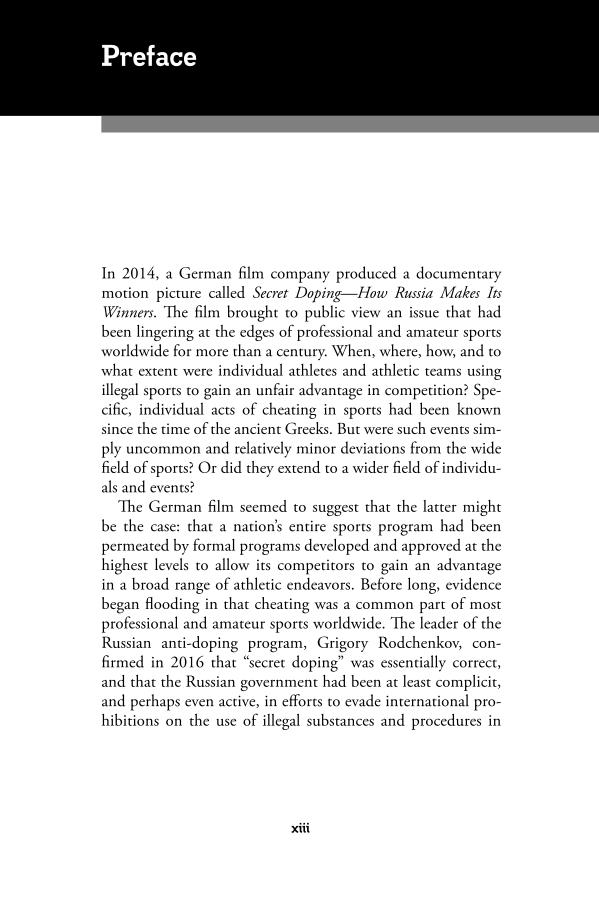xiii Preface In 2014, a German fi lm company produced a documentary motion picture called Secret Doping—How Russia Makes Its Winners . Th e fi lm brought to public view an issue that had been lingering at the edges of professional and amateur sports worldwide for more than a century. When, where, how, and to what extent were individual athletes and athletic teams using illegal sports to gain an unfair advantage in competition? Spe- cifi c, individual acts of cheating in sports had been known since the time of the ancient Greeks. But were such events sim- ply uncommon and relatively minor deviations from the wide fi eld of sports? Or did they extend to a wider fi eld of individu- als and events? Th e German fi lm seemed to suggest that the latter might be the case: that a nation’s entire sports program had been permeated by formal programs developed and approved at the highest levels to allow its competitors to gain an advantage in a broad range of athletic endeavors. Before long, evidence began fl ooding in that cheating was a common part of most professional and amateur sports worldwide. Th e leader of the Russian anti-doping program, Grigory Rodchenkov, con- fi rmed in 2016 that “secret doping” was essentially correct, and that the Russian government had been at least complicit, and perhaps even active, in eff orts to evade international pro- hibitions on the use of illegal substances and procedures in
Document Details My Account Print multiple pages
Print
You have printed 0 times in the last 24 hours.
Your print count will reset on at .
You may print 0 more time(s) before then.
You may print a maximum of 0 pages at a time.



















































































































































































































































































































































































